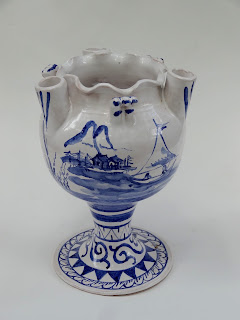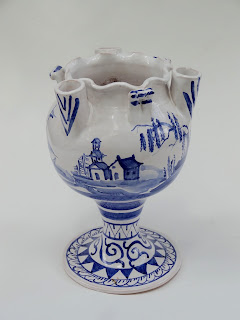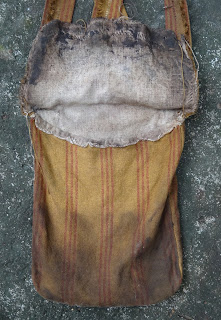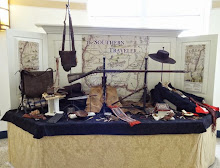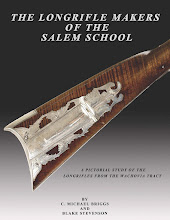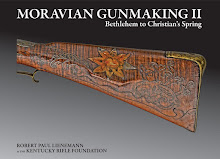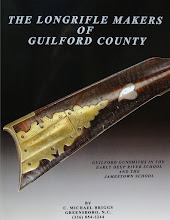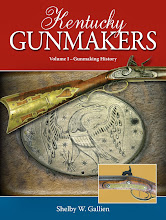Saturday, October 31, 2020
Friday, October 30, 2020
Thursday, October 29, 2020
Wednesday, October 28, 2020
FOR SALE: SIGNED ANTIQUE "Peter Angstadt" LONG RIFLE
This rifle carries a full “Peter Angstatt” barrel signature (this is how it appears to me) although it is very lightly engraved and difficult to read given the barrel age/rust browning. There is also a small face in side profile following the signature. This is one version of his signature which he used on some rifles and this small profile face is known on more than one rifle. The barrel was - at some point in the distant past - cut approximately one inch at the breech and re-breeched with a similar but different breech plug; this replacement breech plug utilized a tang screw hole in a different location than the original breech plug. The original tang bolt which attached to the trigger plate is long gone and a hidden false one has been affixed under the current breech plug to ensure that the front of the trigger plate doe not drop and bind the trigger. There is a wood screw holding the existing tang in place. When I briefly had the rifle here, the wood screw in place was clearly a modern screw with an ‘aged’ head, and it was too long; it was contacting the trigger blade and thus binding the trigger, preventing it from moving at all. I replaced this screw with another ‘aged’ screw of shorter length to correct this issue. Aside from the modern wood screw, the re-breeching work was executed a very long time ago, most likely in response to a leaking or otherwise failing breech plug or an excessively-worn vent or breech area.
The flintlock mechanism displays considerable wear and use, but is otherwise entirely original and has never been converted to percussion. I believe it is an American-made lock of the same period as the rifle, although there are no markings on it at all to indicate manufacture. This lock certainly appears to be original to the rifle; there is no evidence to the contrary.
There is a good amount of original finish present on this rifle. It appears to have been a very “quick,” thin brown spirit (alcohol based) varnish and it has been worn away in areas around some of the brass components (particularly patchbox and trigger guard) as they have been cleaned or polished over the years. I did not do anything to the finish on this rifle other than to atmospherically fume much of the rifle in order to tone down the more freshly-polished brass as well as slightly darken the exposed areas of somewhat bare wood (where the original finish had been polished away).
At some point in the distant past, this rifle was broken through the forestock (quite likely when the barrel was removed for re-breeching) and glued back together. This was NOT a forestock replacement, the broken forward portion was simply reattached. The joint is stable and strong. On either side of the forestock, forward of the middle rammer pipe to the muzzle (shorter on one side than the other), narrow (approximately 1/4”) pieces of wood have been spliced onto the upper edges only. This is a more recent repair but has been executed very well and is difficult to see unless one is carefully looking for it. The muzzle cap is a simple brass “wraparound” strip that is overlapped and the joint soldered together inside the barrel channel. This is typical of much Angstadt work. I believe the brass strip to be original although it surely was removed and refit long ago when the barrel was cut and trimmed, and it must have been likewise desoldered and subsequently resoldered when the wood repair strips were added more recently as these strips run up into this muzzle cap.
The patchbox release rod runs down through the toe plate and is somewhat sticky or hard to move. The toe plate has been pried up at least once, probably very long ago, in order to address issues with this release, and there is some evidence of old ’tweaking’ of the lid release catch in order to address sticking issues. I think this also was most likely done late in the rifle’s working life, not more recently. At this point in time, there is enough wear or looseness in the hinge to permit opening of the box lid.
Overall, this rifle appears to have been used fairly considerably during the course of it’s working life, but not at all in a hard or rough manner.
It is important in that, aside from the slight barrel cut, it essentially appears as a gun that has not been over-restored, modified, refinished etc. It largely looks like it was used into the percussion era or a bit prior to the Civil War, hung on a wall by the mid 19th century and then left alone until now! Much of the original finish remains and my approach to “fuming” the cleaned brass and lighter wood to tone it down was specifically to avoid adding finish or otherwise touching the original finish. The lock alone is spectacular and truly is exactly the style of lock that everyone would dream to find on a 1790s-1810 period American rifle.
Asking $7500 including shipping
Photos supplied by Robert Weil
Copy by Eric Kettenburg









